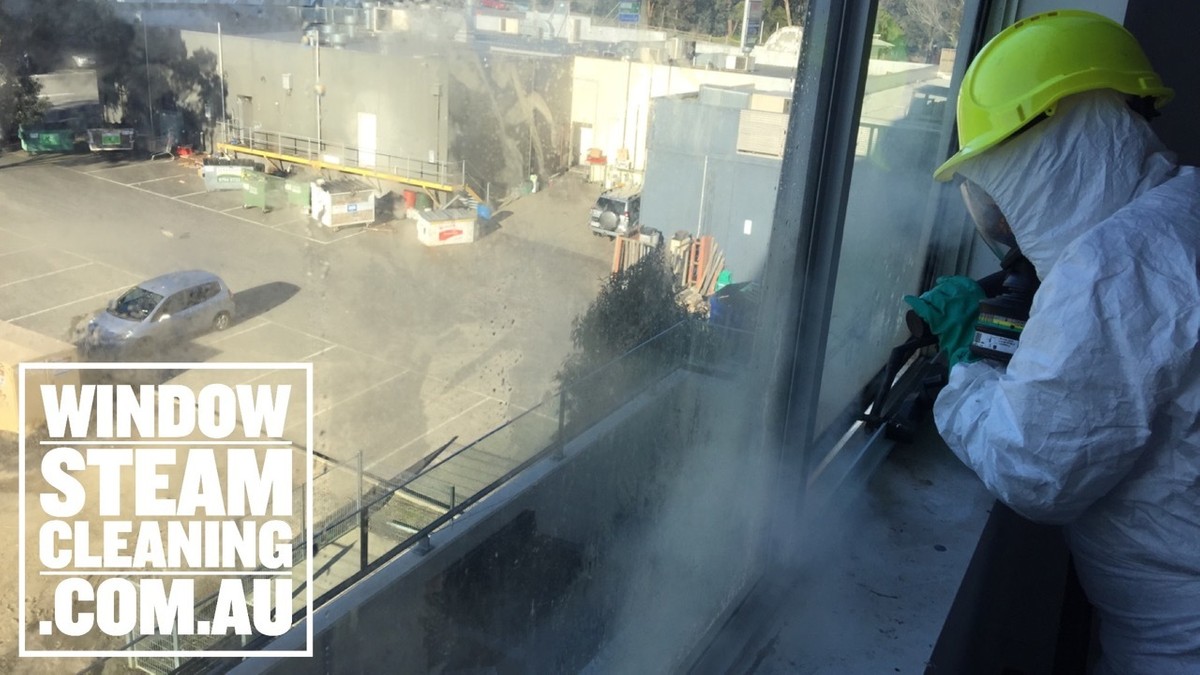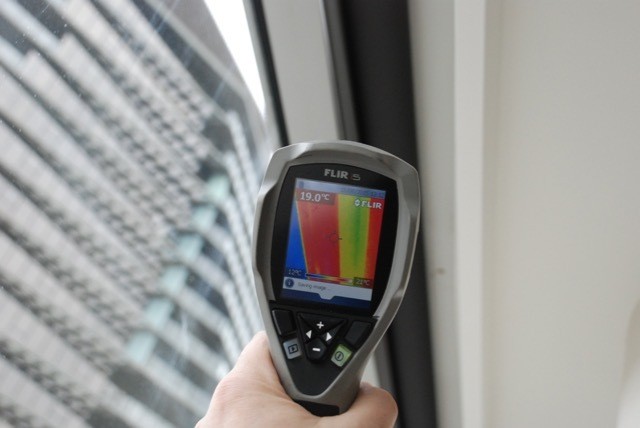

Infection Control For Your Indoor Windows
Are Your Windows Making You Sick?
Melbourne Homes & Apartments:
Why You Need Our Services
Do your windows develop condensation?
Do you have visible mould on your glass, frames or windowsills?
Do you constantly have to mop up dampness indoors?
Are you experiencing any adverse health symptoms that you think might be mould-related?
Is your property showing thermal bridging (air tightness) or insulation problems?

Scientific Level Environmental Cleaning Using Steam Vapour
Manage indoor mould damage and 'make-safe' such interiors using targeted steam disinfection
Example of Mould Removal Using Steam Disinfection
Watch the mould get blasted away and then removed by HEPA air filtration
Health Benefits After Steam Disinfection Of Mould On Windows
Testimonial from a client talking about better health immediately after mould removal
Immediately Improve Your Indoor Air Quality and Reduce the Risks From Mould, Spores and Mycotoxins With Steam Disinfection

Why Steam Disinfection?
It easily kills mould, bacteria, yeasts and virus pathogens
Hazardous mould can quickly build up indoors on wet and damp window sills and lead to mould exposure risks indoors for occupants and pets. Steam disinfection using high pressure and with specialised equipment acts on window frames and sills in the same way as a dentist cleans plaque from teeth and under the gemlike. Steam at high pressure disinfects the smallest inaccessible areas of the window, and leaves it practically germ-free due to the disinfectant action of concentrated steam. Studies have shown that common bacteria are denatured in seconds with steam.

Why HEPA Air Purification?
It removes airborne cell debris and helps stop cross contamination
Cleaning mould can sometimes lead to bigger problems with dispersion of active (viable) cells throughout a home or apartment if the works are is not adequately contained. High efficiency air purification or HEPA actively filters the air and traps extremely small particles in the size range of bacteria, moulds and spores. This is often called air scrubbing. HEPA air purification using industrial grade filtration ensures that the works area does not cross-contaminate and liberate mould spores and mycotoxins and that these are extracted from the air space.

How Do We Work?
Generally we work in a buddy system of two persons - and yes, we wear full PPE to protect ourselves from mould and spores during the cleaning.
Generally you or your body corporate have identified that mould or condensation is a problem. You book us in to make-safe these areas - we come for approximately 1/2-day to 1-day and treat each of your internal windows/frames and sills using steam disinfection in combination with whole of home/apartment HEPA air filtration. After we have disinfected these areas, it is up to you to maintain normal domestic hygiene, ventilate your home daily and wipe away excessive condensation. Our process gets you back to the beginning - as if your windows and frames were brand new. It's then your responsibility to maintain normal domestic hygiene, ventilate your home daily and wipe away excessive condensation. This task will be so much easier after we have disinfected your internal windows :)

Why Does This Happen?
Most modern buildings show multiple areas of heat loss caused by thermal bridging
Thermal bridges are caused by structural and geometric reasons. Thermal bridges are locations where the thermal resistance is lower at those spots. Thermal bridging may lead to surface condensation, mould growth and staining of surfaces. These poorly insulated or non-insulated areas of the building tend to show surfaces that are cold in winter and generally cause thermal comfort problems due to cold draughts or radiation effects. Infrared thermography easily maps out these structural irregularities. Research concludes that in some apartments with critical thermal bridging problems and that show high humidity conditions along with low room temperature - mould growth is possible even on well insulated surfaces. Ventilation and rigorous surface hygiene are mandatory to regulate moisture levels in such rooms that show high moisture production.
Academic Foundations of Our System
See our forthcoming peer-reviewed publication: "Steam Disinfection of Internal Windows and Frames for Condensation Management and Mould Control" to be presented at Australasian College for Infection Prevention and Control 2016 Conference, Melbourne, Australia, 20-23 November 2016.
Selected Refereed Publications
- Gillepsie, E., Tabbara, L., Scott, C., Lovegrove, A., Kotsanas, D. and Stuart, R.L. (2017). Microfiber and steam for neonatal service: An improved and safe cleaning methodology. American Journal of Infection Control. (2017). 45(1): 98-100. DOI: https://doi.org/10.1016/j.ajic.2016.06.041
- Australian Building Codes Board, Australian Institute of Architects. (2011). Condensation in Buildings Information Handbook.
Bagattini, M., Buonocore, R., GFiannouli, M., Mattiacci, D., Bellopede, R., Grimaldi, N., Nardone, A., Zarrilli, R. and Triassi, M. (2015). Effect of treatment with an overheated dry-saturated steam vapour disinfection system on multi drug and extensively drug-resistant nosocomial pathogens and comparison with sodium hypochlorite activity. BMS Research Notes. 8: 551. DOI: 10.1186/s13104-015-1534-9
- Ong, K.H., Embo, B., Lewis, R.D., Kenedy, J., Thummalakunta, L.N. and Elliot, M. (2015). Inactivation of mould spores from moist carpet using steam vapor: Contact time and temperature. J Occup Environ Hyg. 12(7): D131-136. DOI: http://dx.doi.org/10.1080/15459624.2015.1009988
- Gillespie, E., Williams, N., Sloane, T., Wright, L., Kotsanas, D. and Stuart, R.L. (2015). Using microfiber and steam technology to improve cleaning outcomes in an intensive care unit. Am J Infect Control. 43(2): 177-179. DOI: 10.1016/j.ajic.2014.11.006
Hohenwarter, K., Prammer, W., Aichinger, W. and Reychler, G. (2016). An evaluation of different steam disinfection protocols for cystic fibrosis nebulisers. J. Cyst Fibrosis. 15(1): 78-84. DOI: 10.1016/j.jcf.2015.07.005
- Wood, C.L., Tanner, B.D., Higgins, L.A., Dennis, J.S. and Luempert, L.G. (2014). Effectiveness of a steam cleaning unit for disinfection in a veterinary hospital. Am J Vet Res. 75(12): 1083-1088. DOI: 10.2460/ajvr.75.12.1083
- Ong, K.H., Lewis, R.D., Dixit, A., MacDonald, M., Yang, M. and Qian, Z. (2014). Inactivation of dust mites, dust mite allergen, and mold from carpet. J Occup Environ Hyg. 11(8): 519-527. DOI: 10.1080/15459624.2014.880787
- Gillespie, E., Wilson, J., Lovegrove, A., Scott, C., Abernethy, M., Kotsanas, D. and Stuart, R.L. (2013). Environmental cleaning without chemicals in clinical settings. A, J Infect Control. 41(5): 461-463. DOI: 10.1016/j.ajic.2012.07.003
- Abernethy, M., Gillespie, E., Snook, K. and Stuart, R.L. (2013). Microfiber and steam for environmental cleaning during an outbreak. Am J Infect Control. 41(11); 1134-1135. DOI: http://dx.doi.org/10.1016/j.ajic.2013.02.011
- Song, L., Wu, J. and Xi, C. (2012). Biofilms on environmental surfaces: Evaluation of the disinfection efficacy of a novel steam vapor system. American Journal of Infection Control. 40(10): 926-930. DOI: http://dx.doi.org/10.1016/j.ajic.2011.11.013
- Doan, L., Forrest, H., Fakis, A., Craig, J, Claxon, L. and Khare, M. (2012). Clinical and cost effectiveness of eight disinfection methods for terminal disinfection of hospital isolation rooms contaminated with Clostridium difficile 027. Journal of Hospital Infection. 82: 114-121. DOI: 10.1016/j.jhin.2012.06.014
- Sexton, J.D., Tanner, B.D., Maxwell, S.L. and Gerba, C.P. (2011). Reduction in the microbial load on high-touch surfaces in hospital rooms by treatment with a portable saturated steam vapour disinfection system. Am J Infect Control. 39(8): 655-662. DOI: 10.1016/j.ajic.2010.11.009
- Tanner, B.D. (2009). Reduction in infection risk through treatment of microbial contaminated surfaces with a novel, portable, saturated steam vapour disinfection system. Am J Infect Control. 37(1): 20-27. DOI: http://dx.doi.org/10.1016/j.ajic.2008.03.008
- Kalameet, T. (2006). Critical values for the temperature factor to assess thermal bridges. Proc. Estonian Acad. Sci. Eng. 12(3-1): 218-229. Full Text Link
Independence & Who We Are
windowsteamcleaning.com.au is a Division of Biological Health Services - that is an environmental microbiology testing laboratory and indoor air quality consultancy headed by Dr. Cameron L. Jones.
Contact Us For A Free Cost Appraisal or To Book In With Us
Ask us a question and we'll be happy to answer you promptly
Level 1, 459 Toorak Rd,
Toorak, VIC, 3142, Australia1300132350Professional Associations:
Copyright 2015-2018 windowsteamcleaning.com.au is a division of Biological Health Services




























